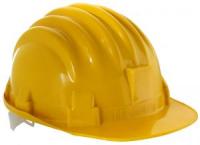- Posts: 19
- Thank you received: 0
Welding Safety
- John Jacobs
-
 Topic Author
Topic Author - Offline
- New Member
-

I want to talk today about the three “F’s” of welding: fire, fumes, and face.
Fire
The welding arc creates extreme temperatures, and may pose a significant fire and explosions hazard if safe practices are not followed. While the welding arc may reach temperatures of 10,000 degrees Fahrenheit, the real danger is not from the arc itself, but rather the intense near the arc and the heat, sparks and spatter created by the arc. This spatter can reach up to 35 feet away from the welding space.
To prevent fires, before beginning to weld, inspect the work area for any flammable materials and remove them from the area. Flammable materials are comprised of three categories: liquid, such as gasoline, oil and paint; solid, such as wood, cardboard and paper; gas, including acetylene, propane and hydrogen.
Know where the fire alarms and extinguishers are located, and check the extinguisher’s gauge to make sure it is full. If an extinguisher is not available, be sure to have access to fire hoses, sand buckets or other equipment that douses fire. And, know the location of the nearest fire exit.
If welding within 35 feet of flammable materials, have a fire watcher nearby to keep track of sparks, and remain in the work area for at least 30 minutes after finishing welding to be sure there are no smoldering fires. Put a fire resistant material, such as a piece of sheet metal or fire resistant blanket, over any flammable materials within the work area, if you can’t remove them.
In an elevated location, make sure no flammable materials are beneath you, and watch out for other workers below you in order to prevent dropping sparks or spatter on them. Even high concentrations of fine dust particles may cause explosions or flash fires. If a fire starts, don’t panic – and call the fire department immediately.
Fumes
It’s no surprise that overexposure to welding fumes and gases can be hazardous to your health. Welding fume contains potentially harmful complex metal oxide compounds from consumables, base metal and the base-metal coatings, so it’s important to keep your head out of the fumes and use enough ventilation and/or exhaust to control your exposure to substances in the fume, depending on the type of rod and base metal being used.
The specific potential health effects which relate to the welding consumable product being used can be found in the Health Hazard Data section of the Safety Data Sheet available from your employer or the consumable manufacturer.
Welding areas require adequate ventilation and local exhaust to keep fumes and gases from the breathing zone and the general area. If the air in your breathing zone is not clear, or if breathing is uncomfortable, check to be sure the ventilation equipment is working and report concerns to a supervisor so your exposure to substances in the welding fume can be checked. This is especially important when welding with stainless steel or hardfacing products. To prevent exposure from coatings such as paint, galvanizing, or metal platings on base metals, clean the base metal before beginning to weld.
Face
Helmets with side shields are essential for protecting eyes and skin from exposure to arc rays. Make sure to choose the right shade lens for your process – use the helmet’s instructions to help select the right shade level. Begin with a darker filter lens and gradually change to a lighter shade until you have good visibility at the puddle and weld joint but it is comfortable and does not irritate your eyes. Helmets also protect from sparks, heat and electric shock. Welder’s flash from improper eye protection may cause extreme discomfort, swelling or temporary blindness, so don’t take any risks – wear a helmet at all times during welding.
Remember the three “F’s” of welding:
FIRE, FUMES, AND FACE (including eyes)
Look out for these three, and you’ll be able to weld safely.
Please Log in or Create an account to join the conversation.
